Genre: Platform Developer: Realtime Associates Publisher: Sega Ent. Players: 1 Released: 1995
Bug! emerged as an unexpected contender during the pivotal launch of the Saturn console in North America, stepping into the spotlight as SEGA’s mascot until Sonic made his anticipated debut. While other potential candidates existed, including the charming Clockwork Knight and the excellent Astal, those games were more traditional in their design and didn’t bring all the bells and whistles people expected of “next gen” consoles. In contrast, Bug! stood out for its innovative approach to platforming and its embodiment of the new gaming experiences the Saturn promised to deliver.
Designed by Realtime Associates (Normy’s Beach Babe-O-Rama, Warlock), this early Saturn title offered a unique blend of 2D and 3D gameplay that set it apart from its contemporaries. It revolved around Bug, a Hollywood actor seeking his big break. He took the lead role in an action film where his family, including his pet Maggot Dog, were kidnapped by the antagonist, Queen Cadavra, so Bug embarked on a mission to rescue them. The storyline was standard fare for the era, but it provided a fitting backdrop for Bug’s adventure through six worlds and their respective movie sets. Short and humorous FMV sequences added a nice touch to the transitions between levels, reminding players that the whole affair was just a movie.
The gameplay involved navigating Bug through expansive levels filled with traps, enemies, and secrets. The introduction of the “quad-scroller” mechanic, adding a third dimension to traditional 2D platforming, showed Realtime Associates’ intent to innovate within the genre and take advantage of Sega’s new hardware (though company lead David Warhol does admit that the Saturn’s second processor wasn’t used at all). While some may initially find the constrained level design limiting, I thought they actually make a decent effort to straddle the line between old and new, providing a refreshing throwback to traditional platformers while incorporating the depth of 3D environments. This fusion of styles ensured that Bug! remained engaging and distinct, standing the test of time against more expansive and polished titles like Super Mario 64 better than many other early 3D platformers of the era.
Despite drawing inspiration from the Mario series, Bug! managed to carve out its own identity in the early 3D era with inventive level design and a plethora of power-ups. The ability to explore multiple paths within each stage brought some depth to the gameplay, requiring players to strategize and adapt to different challenges depending on the path they took. Additionally, the variety of power-ups, from “Bug Juice” to the coveted spit wads, enhanced the overall experience and kept the platforming gameplay engaging and dynamic enough that it didn’t become tiresome.
Bug! presented a charming and consistent look, with vivid colors and whimsical character designs reminiscent of Saturday morning cartoons. The real-time 3D scenarios were beautifully rendered, creating a comical atmosphere that complemented the game’s lighthearted tone. Each world on Bug Island boasted its own unique visual style, from lush greenery to snowy landscapes, enhancing the sense of immersion and variety throughout the game. Despite their simplicity, the game’s landscapes evolved as players progress, showcasing an impressive variety of terrain and sprite work. Of course, being a ’90s platformer, there were going to be stages with that standard range of snow, desert, and underwater environments. It was well-trodden ground for sure, but Realtime Associates’ affection for cartoonish humor shone through in the quirky enemies and playful level designs, evoking a nostalgic charm akin to Earthworm Jim.
However, Bug! was not without its flaws. The camera mechanics occasionally hindered gameplay, especially when encountering enemies that seemingly appeared out of nowhere. Moreover, while the core mechanics were solid, the game’s difficulty curve could feel unbalanced, oscillating between leisurely exploration and frenetic precision-platforming with little warning. Cheap hits and trial-and-error level design contributed to moments of frustration, and there were a lot – I mean A LOT – of deaths caused by the camera angle. Furthermore, certain platforming segments felt overly punishing due to wonky hit detection and lack of checkpoints, leading to frustrating setbacks for players. Bug’s comical quips could also become grating at times. Yes, little fella, we knew you could talk! No need to repeat the same “OH, THAT’S GOTTA HURT!” 10 times in a row.
It may not have achieved widespread acclaim as a Saturn launch title, but despite its flaws, Bug! offered a nostalgic yet innovative platforming experience that remained enjoyable despite its occasional shortcomings. The game’s intricate level layouts and diverse gameplay elements provided ample opportunities for exploration and discovery, and the plentiful collectibles, like blue crystals and golden coins, incentivized thorough exploration and added depth to the overall experience. Additionally, the inclusion of power-ups and bonus stages mixed up the gameplay, though some bonus levels may have proven excessively challenging. It may not have reached the heights of iconic titles like Sonic the Hedgehog, but Bug! still stands as a worthy addition to any platforming fan’s collection, providing hours of fun and challenge for players of all ages.
SCORE: 7 out of 10

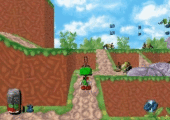
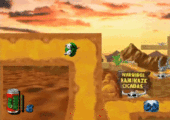
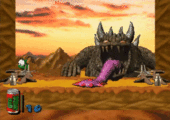
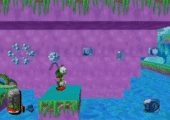
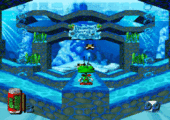
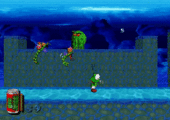
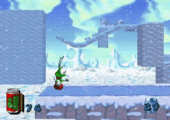
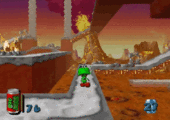
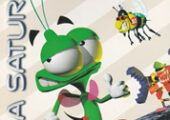
Recent Comments